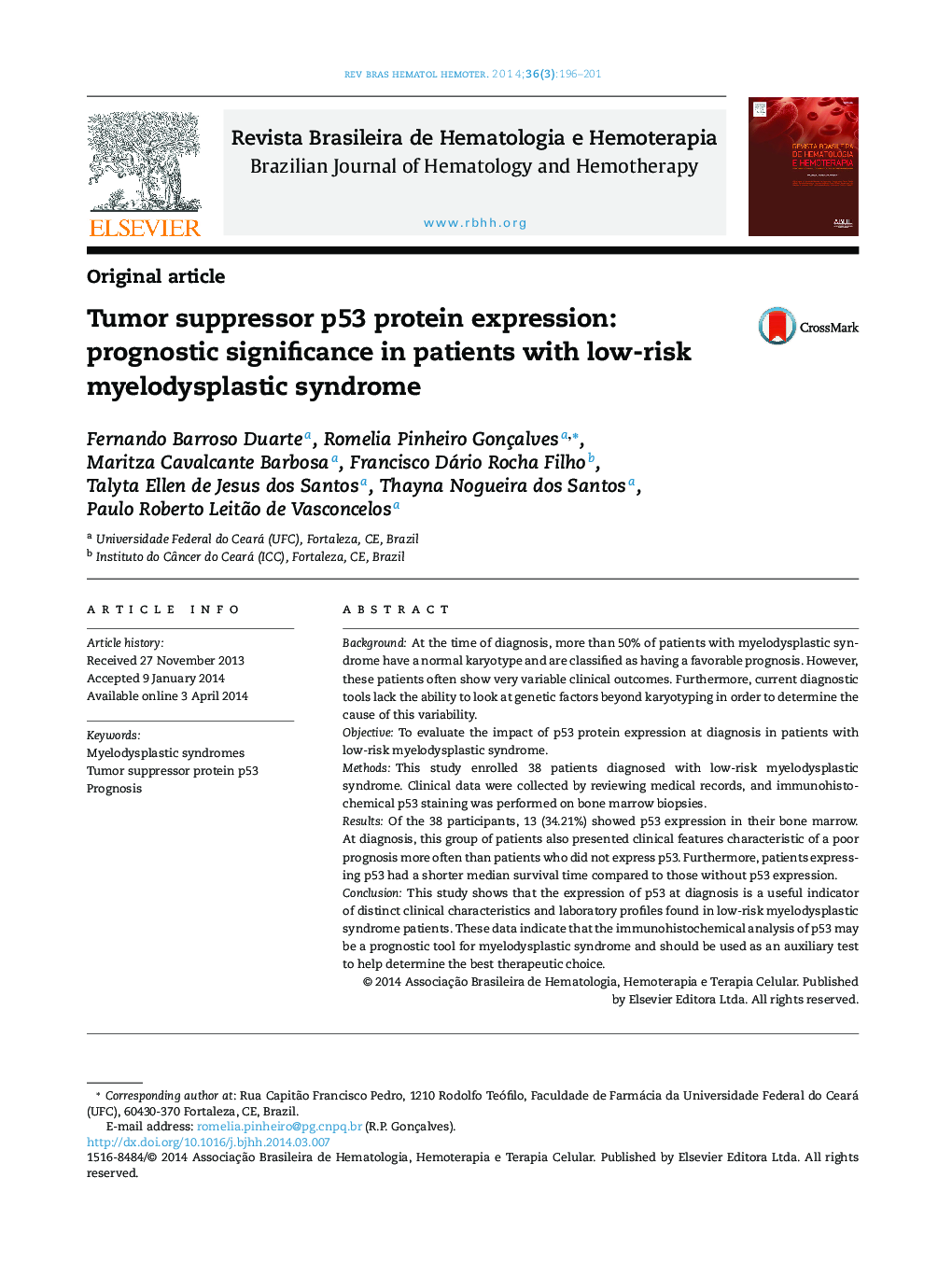| Article ID | Journal | Published Year | Pages | File Type |
|---|---|---|---|---|
| 3333032 | Revista Brasileira de Hematologia e Hemoterapia | 2014 | 6 Pages |
BackgroundAt the time of diagnosis, more than 50% of patients with myelodysplastic syndrome have a normal karyotype and are classified as having a favorable prognosis. However, these patients often show very variable clinical outcomes. Furthermore, current diagnostic tools lack the ability to look at genetic factors beyond karyotyping in order to determine the cause of this variability.ObjectiveTo evaluate the impact of p53 protein expression at diagnosis in patients with low-risk myelodysplastic syndrome.MethodsThis study enrolled 38 patients diagnosed with low-risk myelodysplastic syndrome. Clinical data were collected by reviewing medical records, and immunohistochemical p53 staining was performed on bone marrow biopsies.ResultsOf the 38 participants, 13 (34.21%) showed p53 expression in their bone marrow. At diagnosis, this group of patients also presented clinical features characteristic of a poor prognosis more often than patients who did not express p53. Furthermore, patients expressing p53 had a shorter median survival time compared to those without p53 expression.ConclusionThis study shows that the expression of p53 at diagnosis is a useful indicator of distinct clinical characteristics and laboratory profiles found in low-risk myelodysplastic syndrome patients. These data indicate that the immunohistochemical analysis of p53 may be a prognostic tool for myelodysplastic syndrome and should be used as an auxiliary test to help determine the best therapeutic choice.
